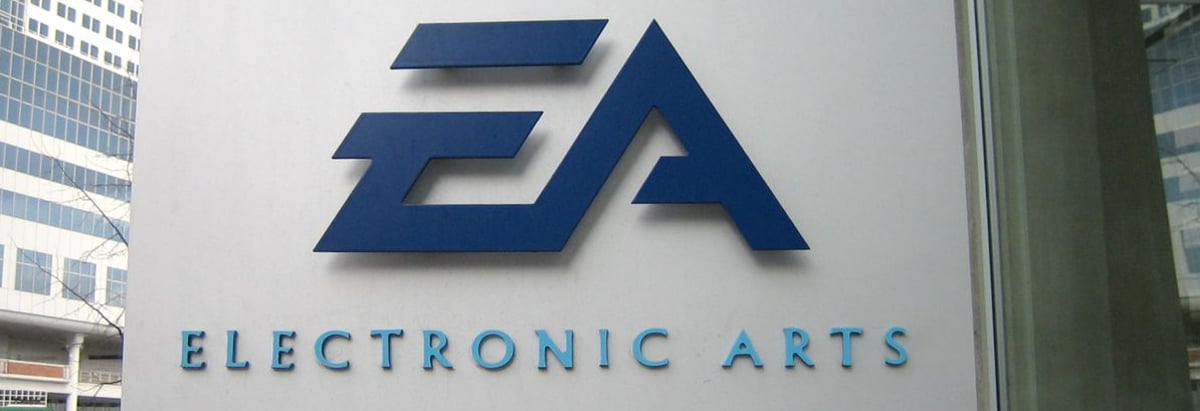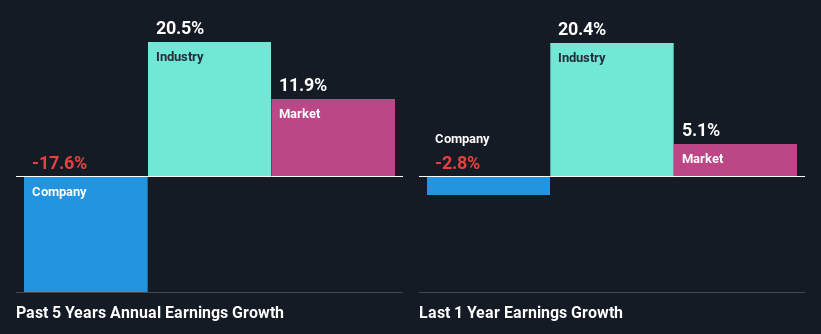- United States
- /
- Entertainment
- /
- NasdaqGS:EA
Is Electronic Arts Inc.'s (NASDAQ:EA) Recent Stock Performance Influenced By Its Fundamentals In Any Way?

Electronic Arts' (NASDAQ:EA) stock is up by a considerable 18% over the past three months. As most would know, fundamentals are what usually guide market price movements over the long-term, so we decided to look at the company's key financial indicators today to determine if they have any role to play in the recent price movement. Specifically, we decided to study Electronic Arts' ROE in this article.
Return on equity or ROE is a key measure used to assess how efficiently a company's management is utilizing the company's capital. In simpler terms, it measures the profitability of a company in relation to shareholder's equity.
We check all companies for important risks. See what we found for Electronic Arts in our free report.How To Calculate Return On Equity?
The formula for ROE is:
Return on Equity = Net Profit (from continuing operations) ÷ Shareholders' Equity
So, based on the above formula, the ROE for Electronic Arts is:
14% = US$1.0b ÷ US$7.4b (Based on the trailing twelve months to December 2024).
The 'return' is the profit over the last twelve months. Another way to think of that is that for every $1 worth of equity, the company was able to earn $0.14 in profit.
View our latest analysis for Electronic Arts
What Is The Relationship Between ROE And Earnings Growth?
We have already established that ROE serves as an efficient profit-generating gauge for a company's future earnings. Based on how much of its profits the company chooses to reinvest or "retain", we are then able to evaluate a company's future ability to generate profits. Generally speaking, other things being equal, firms with a high return on equity and profit retention, have a higher growth rate than firms that don’t share these attributes.
A Side By Side comparison of Electronic Arts' Earnings Growth And 14% ROE
To start with, Electronic Arts' ROE looks acceptable. And on comparing with the industry, we found that the the average industry ROE is similar at 14%. However, while Electronic Arts has a pretty respectable ROE, its five year net income decline rate was 18% . So, there might be some other aspects that could explain this. These include low earnings retention or poor allocation of capital.
That being said, we compared Electronic Arts' performance with the industry and were concerned when we found that while the company has shrunk its earnings, the industry has grown its earnings at a rate of 21% in the same 5-year period.

Earnings growth is a huge factor in stock valuation. What investors need to determine next is if the expected earnings growth, or the lack of it, is already built into the share price. By doing so, they will have an idea if the stock is headed into clear blue waters or if swampy waters await. If you're wondering about Electronic Arts''s valuation, check out this gauge of its price-to-earnings ratio, as compared to its industry.
Is Electronic Arts Making Efficient Use Of Its Profits?
When we piece together Electronic Arts' low three-year median payout ratio of 21% (where it is retaining 79% of its profits), calculated for the last three-year period, we are puzzled by the lack of growth. This typically shouldn't be the case when a company is retaining most of its earnings. So there might be other factors at play here which could potentially be hampering growth. For instance, the business has faced some headwinds.
Additionally, Electronic Arts has paid dividends over a period of five years, which means that the company's management is rather focused on keeping up its dividend payments, regardless of the shrinking earnings. Upon studying the latest analysts' consensus data, we found that the company's future payout ratio is expected to drop to 8.8% over the next three years. Accordingly, the expected drop in the payout ratio explains the expected increase in the company's ROE to 27%, over the same period.
Conclusion
On the whole, we do feel that Electronic Arts has some positive attributes. Yet, the low earnings growth is a bit concerning, especially given that the company has a high rate of return and is reinvesting ma huge portion of its profits. By the looks of it, there could be some other factors, not necessarily in control of the business, that's preventing growth. With that said, we studied the latest analyst forecasts and found that while the company has shrunk its earnings in the past, analysts expect its earnings to grow in the future. To know more about the company's future earnings growth forecasts take a look at this free report on analyst forecasts for the company to find out more.
Valuation is complex, but we're here to simplify it.
Discover if Electronic Arts might be undervalued or overvalued with our detailed analysis, featuring fair value estimates, potential risks, dividends, insider trades, and its financial condition.
Access Free AnalysisHave feedback on this article? Concerned about the content? Get in touch with us directly. Alternatively, email editorial-team (at) simplywallst.com.
This article by Simply Wall St is general in nature. We provide commentary based on historical data and analyst forecasts only using an unbiased methodology and our articles are not intended to be financial advice. It does not constitute a recommendation to buy or sell any stock, and does not take account of your objectives, or your financial situation. We aim to bring you long-term focused analysis driven by fundamental data. Note that our analysis may not factor in the latest price-sensitive company announcements or qualitative material. Simply Wall St has no position in any stocks mentioned.
About NasdaqGS:EA
Electronic Arts
Develops, markets, publishes, and delivers games, content, and services for game consoles, PCs, mobile phones, and tablets worldwide.
Excellent balance sheet with limited growth.
Similar Companies
Market Insights
Community Narratives



